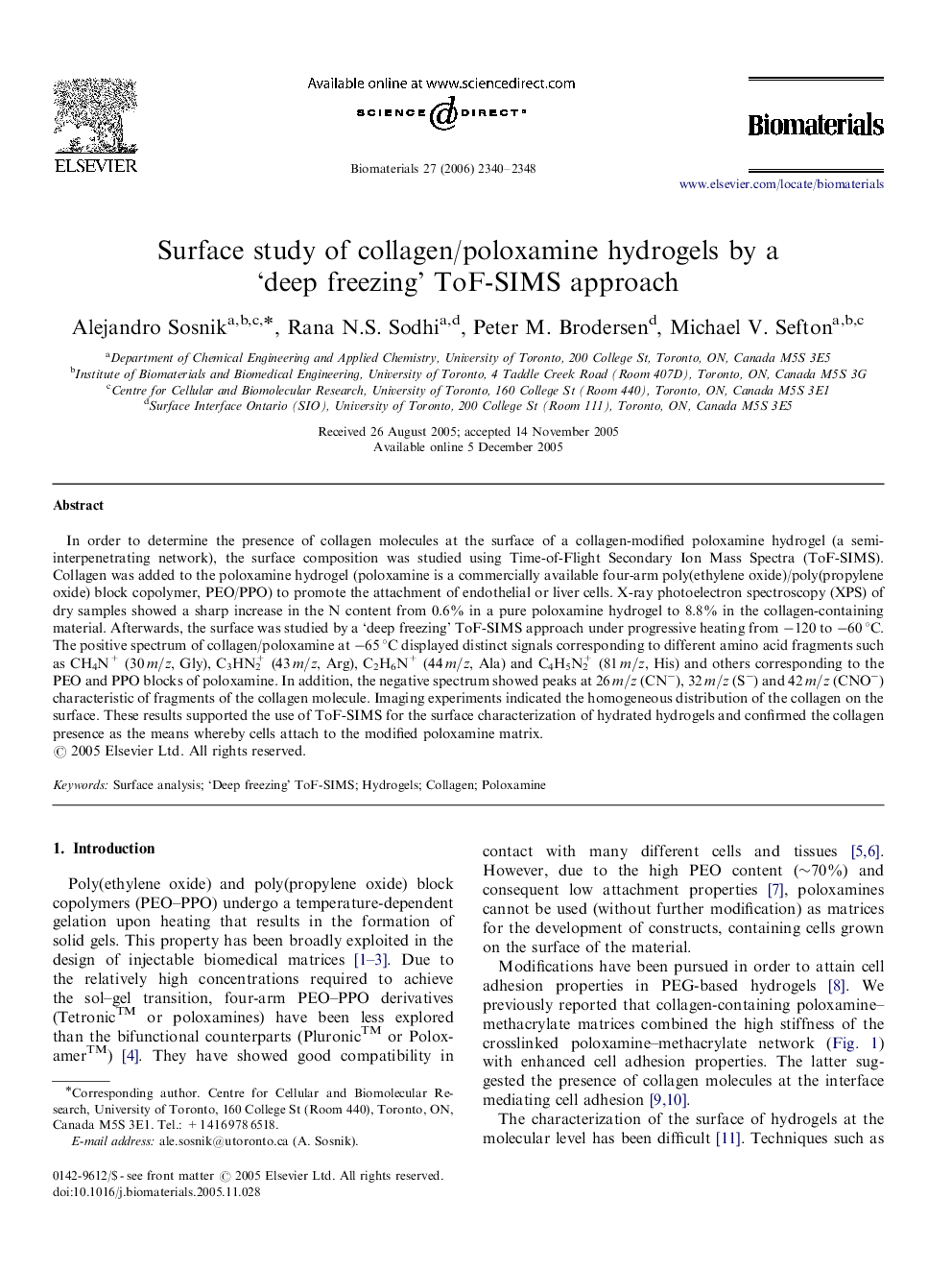| Article ID | Journal | Published Year | Pages | File Type |
|---|---|---|---|---|
| 11904 | Biomaterials | 2006 | 9 Pages |
In order to determine the presence of collagen molecules at the surface of a collagen-modified poloxamine hydrogel (a semi-interpenetrating network), the surface composition was studied using Time-of-Flight Secondary Ion Mass Spectra (ToF-SIMS). Collagen was added to the poloxamine hydrogel (poloxamine is a commercially available four-arm poly(ethylene oxide)/poly(propylene oxide) block copolymer, PEO/PPO) to promote the attachment of endothelial or liver cells. X-ray photoelectron spectroscopy (XPS) of dry samples showed a sharp increase in the N content from 0.6% in a pure poloxamine hydrogel to 8.8% in the collagen-containing material. Afterwards, the surface was studied by a ‘deep freezing’ ToF-SIMS approach under progressive heating from −120 to −60 °C. The positive spectrum of collagen/poloxamine at −65 °C displayed distinct signals corresponding to different amino acid fragments such as CH4N+ (30 m/zm/z, Gly), C3HN2+ (43 m/zm/z, Arg), C2H6N+ (44 m/zm/z, Ala) and C4H5N2+ (81 m/zm/z, His) and others corresponding to the PEO and PPO blocks of poloxamine. In addition, the negative spectrum showed peaks at 26 m/zm/z (CN−), 32 m/zm/z (S−) and 42 m/zm/z (CNO−) characteristic of fragments of the collagen molecule. Imaging experiments indicated the homogeneous distribution of the collagen on the surface. These results supported the use of ToF-SIMS for the surface characterization of hydrated hydrogels and confirmed the collagen presence as the means whereby cells attach to the modified poloxamine matrix.
